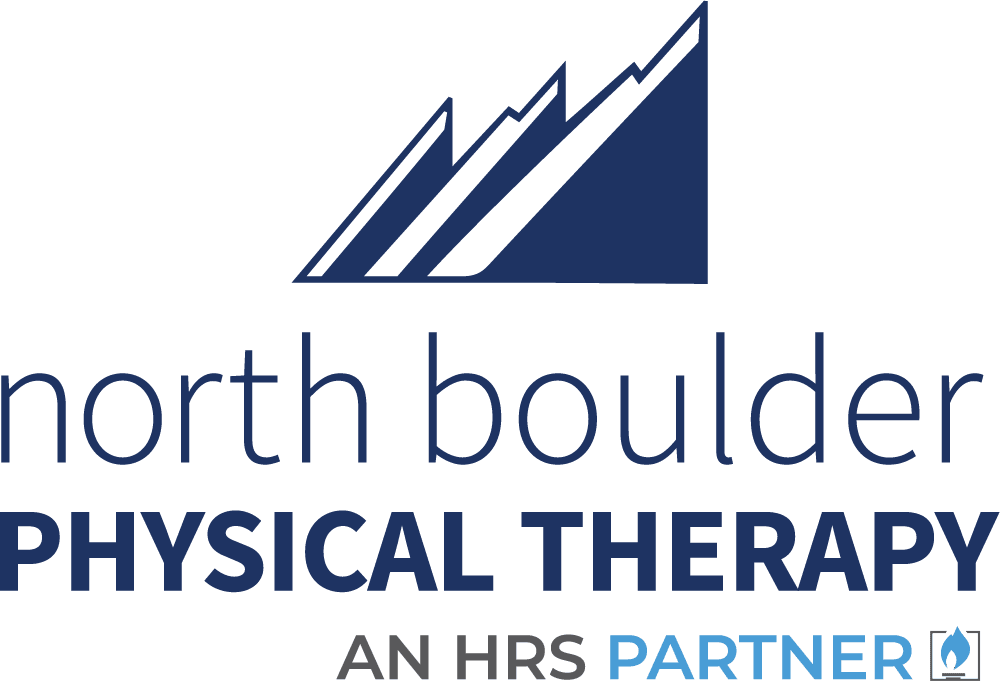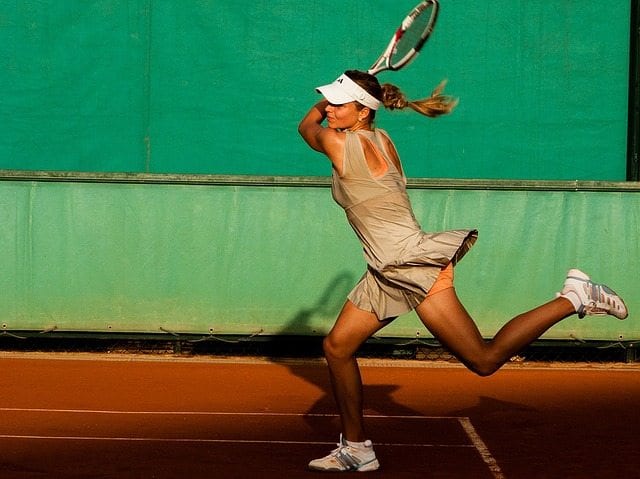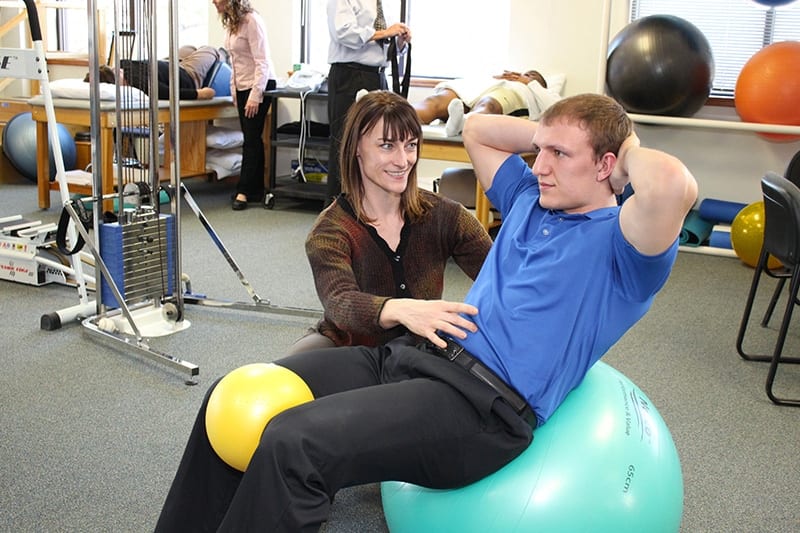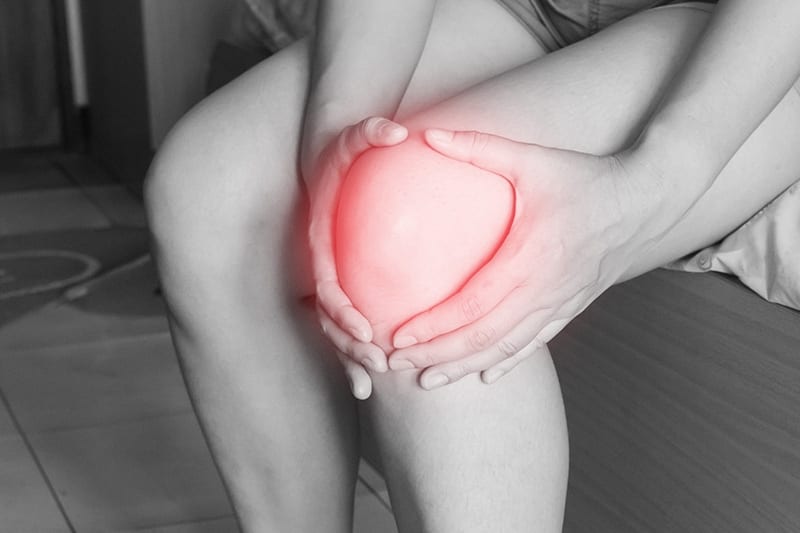 At North Boulder Physical Therapy, we know there’s a reason why physical therapy and sports injuries go hand in hand. Most sports involve running, a prime culprit for the most common ailments. Because it involves all the major muscle groups, head to toe, the potential for strain while running is a real risk. But that’s not the only injury athletes might face. Repetitive motions, whether swinging a tennis racket or a baseball bat, can also lead to overuse. While preventing an injury is always best, physical therapy can be implemented to help you regain strength and return to sport.
At North Boulder Physical Therapy, we know there’s a reason why physical therapy and sports injuries go hand in hand. Most sports involve running, a prime culprit for the most common ailments. Because it involves all the major muscle groups, head to toe, the potential for strain while running is a real risk. But that’s not the only injury athletes might face. Repetitive motions, whether swinging a tennis racket or a baseball bat, can also lead to overuse. While preventing an injury is always best, physical therapy can be implemented to help you regain strength and return to sport.
When it comes to physical therapy and sports injuries, you likely perform a treatment without realizing that it’s considered a type of physical therapy. It’s known as RICE – rest, ice, compression and elevation. This is a great modality for addressing the initial injury and preventing further strain on your body.
Let’s take a look at sports injuries that may benefit from sports medicine therapy and rehabilitation. If you’ve experienced any of these, please see your doctor for a proper diagnosis and treatment plan. The information we provide here is purely anecdotal and should not be a substitute for qualified care.
Rotator Cuff Injuries
Accounting for around 20% of sports injuries, the shoulder is very prone to damage. Your rotator cuff muscles (joined as tendons) hold together the bones in your shoulder, keep your upper arm in its socket and control movements. Depending on the activity, an athlete may experience a partial tear or complete tear of the rotator cuff. Frequent use, like lifting weights, throwing a ball or swimming, may be the cause of a degenerative tear which happens slowly and over time. A fall or violent tackle may cause an acute tear, possibly along with other injuries such as a dislocated shoulder or collarbone fracture.
The typical first line of defense is the RICE method and anti-inflammatory medicine. For a complete tear, your doctor may recommend surgery, after which rotator cuff rehabilitation will likely be necessary to help you restore motion, strength and function. At North Boulder Physical Therapy, we will provide you with a personalized plan to help you return to sport, including exercises, manual therapy and more.
Pulled and Torn Muscles
If you’re an athlete or had any P.E. classes during your school years, you know just how important it is to warm up before jumping into a volleyball game, going for a run, or doing anything strenuous, really. Yet, one of the most frequent injuries that athletes experience is a pulled muscle, even a torn muscle if there’s a fall, impact or tackle involved. Think of it like a rubber band that’s been sitting out in the cold. If you allow it to warm, its full elasticity will return. However, if you yank it while it’s still cold, it might fray or snap altogether. Same thing with your muscles. Going from an inactive state to a sudden sprint can create a severe enough force to pull or tear your muscles.
For physical therapy and sports injuries like this, RICE and anti-inflammatory pain relievers will get you through the initial stages immediately after the injury. You’ll then need to slowly stretch and re-lengthen the muscles so they don’t heal while shortened. If pulled muscles are a chronic issue or you suffer a more severe torn muscle injury, physical therapy may be needed. Modalities can include heat therapy, massage, gradual stretching, and ultrasound, along with exercises to improve strength and flexibility.
Patellofemoral Syndrome
More commonly known as “runner’s knee”, this is a misalignment of the knee cap. As you straighten out your knee while walking or running, the knee cap (a floating bone) does not travel symmetrically in its groove. Instead, it rubs along the side which can cause wear on the cartilage along with fluid build-up in the knee. Irritation of the knee cap is also common. You may hear a grinding or clicking noise and experience pain that gradually worsens. To prevent patellofemoral syndrome and help align your knee cap, you’ll need footwear that provides proper support and may want to look into an exercise or weight-lifting regimen to build your quadricep muscle strength.
If runner’s knee is preventing you from going for a run or participating in sports, physical therapy can address underlining factors such as tight soft tissues on the outside of the knee, issues with the vastus medialis, deficient flexibility, weaknesses of hip musculature, as well as over-pronation of the feet.
Shin Splints
Starting a fitness routine that requires a lot of running (typically on hard surfaces), or increasing your workout intensity are both causes of pain in the muscles located along the shin bone, on the inside of your leg. These muscles raise the arch of the foot when walking, running or jumping. Repeated overuse can cause inflammation, as well as pull muscle away from the shin bone or create small tears. If you’ve ever had shin splints, you are likely familiar with the most obvious symptom, pain in the front lower leg.
While physical therapy and sports injuries like shin splints don’t often go beyond rest, ice, compression and elevation, your doctor may recommend further treatment if you’re experiencing severe pain that doesn’t respond to RICE, visible swelling and pain even while at rest. Physical therapy for shin splints can provide pain relief, as well as address related issues such as leg strength and flexibility, deficient shock absorption and toe running. At North Boulder Physical Therapy, we’ll put together a treatment plan that addresses any and all shin splint issues you might be experiencing and help you get back up to speed.
For physical therapy and sports injuries care, come see us at North Boulder Physical Therapy. We have two offices in Boulder, as well as locations in Golden and Westminster. Our sports medicine and therapy experts will help you with everything from a torn rotator cuff, to groin strains, ACL rehabilitation and much more. We’ll build a treatment plan that aligns with your unique needs and helps you get back to the sport you love. Call the office nearest to you to request your appointment.



